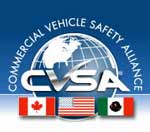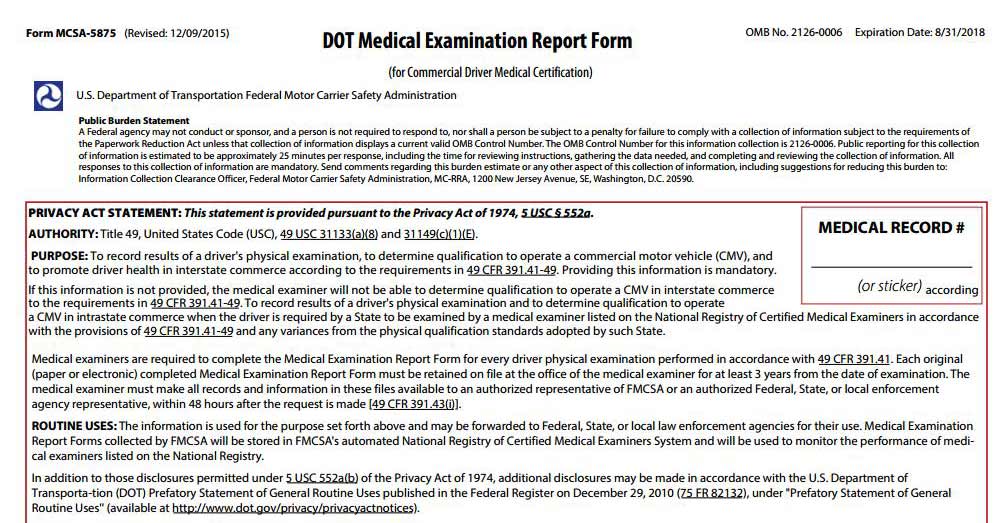 Loading... Please wait...
Loading... Please wait...- Home
- Trucking Directories
-
Truckers News Feed
- Semi Truck Accidents News Reports
- Bus Accidents News Reports
- Current USA Diesel Fuel Prices
- Take Our Border Back Convoy News Coverage Live Streams Schedule Route Activities
- USA Real Time Road Conditions
- FMCSA DOT CDL News Regulations Enforcement Actions
- Trucking Companies Driver Scams Ripoffs Hiring Training Leasing
-
Video Library
- EXTREME Big Rig Truck Wrecks Crashes Accidents Videos
- Custom Big Rig Semi Truck Videos
- Tutorial Video National Registry Medical Examiner
- Big Rig Trucker Training Videos
- Heavy Haul Trucking Big Rig Videos
- FasterTrucks Road Train Videos
- Perils of Speed Limiters in Big Rig Trucks Videos
- Global Truckers Videos
-
Articles
- Top 50 Tips Every Truck Driver Should Know
- Truck Driver Safe Driving Rules
- Downsides of Driving a Truck in Winter
- How to Find a Truck Driving School
- Top 5 Characteristics Successful Truck Drivers
- Truck Driver Accident Procedures
- Owner Operator Tax Deductions
- DOT CDL Commercial Vehicle Inspection Procedures
- HOS New Hours of Service Rules FAQ Truckers
- SafetyPass Pro
- Search Trucking
- Contact Us
Truck Driver Safe Driving Rules

Best Safe Driving Tips for Truck Drivers. Watch Videos, See what happens when safe driving rules are violated.
News Reports Truck Accidents

World Wide Coverage. Recent Truck Accident News Reports on Semi Truck Crashes and Big Rig Wrecks.
DOT Truck Inspection Procedures

North American Standard Level I DOT Inspection Procedures.
CDL Drivers DOT Medical Exam Form MCSA-5875 PDF

Current Form & Medical Card
Free to Print or Download.Videos How To Chain Up Big Trucks Tire Chains Instructions

Videos - Learn How To Chain Up a Big Rig Semi Truck or 18 Wheeler. Experienced Truck Drivers Show You How to do it. Single Tire Chains and Double Tire Chains (Three-Railers) Installation Instructions.
Top 50 Tips Every Truck Driver Should Know
Truck drivers travel thousands of miles across the country every year. Learn 50 important tips that can make those miles safer and more comfortable.
More than 1.4 million people are working as truck drivers, making this a popular profession in the United States. For people who enjoy the road, truck driving can be a very fulfilling career. Review the following to make the experience safer and more rewarding.
Re-Published in collaboration with *The Lanier Law Firm. See the original article here.
Safety on the Road
1. Wear Your Seatbelt. Seatbelts save lives, and the laws in many states require you to wear seatbelts. Don’t give police officers an excuse to pull you over because you aren’t wearing a seatbelt.
2. Avoid Distractions and Cell Phone Use. If you need to send a text, read a text or make a phone call, pull over and stop first. Anything that causes you to take your attention off the road is dangerous. When you are driving a multi-ton truck, you want to avoid anything that might cause an accident.
3. Follow the Hours of Service Rules. FMCSA (Federal Motor Carrier Safety Alliance) rules require that you take at least a 30-minute break after eight cumulative hours of driving and require that you are off duty for at least 10 hours a day. Breaking those rules causes fatigue, which could increase the potential for accidents. These are only minimum requirements—the more breaks you take, the safer you will be.
4. Defensive Driving. Stay aware of your surroundings at all times and drive predictably. You can’t control other drivers, but you can reduce the likelihood that they will hit your truck if you drive carefully and pay attention.
5. Watch Your Blind Spots. According to a study performed at the University of Michigan, most fatal crashes that involve heavy trucks are not the trucker’s fault. Unfortunately, this just means you need to be extra aware of reckless drivers. By regularly checking all of your mirrors, you can maintain awareness of the vehicles driving near your truck and take appropriate action.
6. Keep Lane Changes to a Minimum. Lane changes have the potential to be quite dangerous, particularly if a vehicle has slipped into your blind spot. You should change lanes as little as possible and always check mirrors and signal well in advance of making a lane change. This gives other vehicles plenty of time to get out of your way.
7. Be Aware of Local Laws. Traffic laws are different in every state you drive through. Familiarize yourself with any laws that specifically affect you before entering a state. If you are unsure, be conservative, drive slowly and stay in the right lane as much as possible.
8. Use GPS Units for Trucking. Google Maps is an excellent resource for regular drivers, but truck drivers should not rely on a car GPS. A truck GPS is specially designed to choose routes that will accommodate the height and weight of your vehicle.
9. Drive at a Safe Speed. Because you have a schedule to keep, you might feel tempted to speed. But you’ll lose a lot more time if the police pull you over for going over the speed limit. Stay under posted truck speed limits at all times. Be aware that you will need to slow down even more when going downhill because your truck will naturally speed up.
10. Watch Steep Hills and Use Auxiliary Brakes. Overusing your brakes might cause brake failure, which is extremely dangerous when driving a truck. If a hill has a steep grade warning or a reduced truck speed, you should probably use your auxiliary engine brakes to keep your brakes from over-heating and possibly catching fire. You should definitely use them on any hill with an emergency runaway truck ramp.
11. Plan Your Trip. A few minutes of planning before you get on the road can save you hours of driving time. Check for upcoming weather alerts and road conditions, and reroute if necessary. Your truck GPS can help you plan a smooth and safe route.
12. Keep a Safe Distance. Large Class 8 trucks could need up to the length of two football fields to come to a safe stop. Whenever possible, you should keep plenty of room between you and the vehicles in front of you, even if this requires you to slow down to make additional room.
13. Make Wide Turns Carefully. Nearly all turns for a truck are wide turns. Before making any turns, slow down, signal early and triple-check all blind spots. Even with those precautions, you may be in danger while turning, so make sure you are ready to stop safely if necessary.
14. Use Your Turn Signals. You are driving a cumbersome beast that makes very wide turns. While you can’t control everything on the road, you can give other drivers plenty of warning before you make any turns, giving them more time to get out of the way. The same is true when you are trying to switch lanes.
15. Get Rest. Many truck drivers are on the road for 14 hours a day and then try to fit-in a full social life into the remaining 10 hours. This is a recipe for chronic fatigue. Take plenty of breaks and get a full night’s sleep every night.
16. Eat Healthy. It is easy to eat nothing but fast food and greasy fare while on the road. This isn’t good for your waistline or your health. Take a little extra effort to include vegetables, fruit and other parts of a healthy diet in your meal plan.
17. Watch OTC Drugs and Know Their Effects. If you have allergies, you may feel tempted to take Benadryl to deal with the symptoms. But Benadryl also causes drowsiness, which presents a danger while driving. Pay attention to the side effects of all over-the-counter drugs before taking them.
18. Take Frequent Breaks. Regulations require that you take one 30-minute break a day, but taking just one break isn’t great for your health. You will be less fatigued and more comfortable if you take regular breaks throughout the day, especially if you get a little exercise or stretching done during those breaks.
19. Wear Comfortable Clothing. Nobody is forcing you to wear a shirt buttoned to your throat and a tie, and you shouldn’t. Wear comfortable, breathable clothing that doesn’t hinder your movements and allows for proper blood flow which can help you remain alert.
20. Consider the Effects of Road Vibrations. As you drive, your truck vibrates while it moves over the road. Those vibrations put stress on your body, which might be harmful over time. Give your body a break from these vibrations by taking occasional time off or installing extra padding on your truck seat.
21. Have an Emergency Kit. All trucks should have an emergency kit with medical supplies, blankets, food and water. This kit is your lifeline if you get hurt or if you get stuck somewhere for a few days.
22. Take Breaks in Parking Lots or Rest Areas (Not on the Shoulder). You may have to occasionally pull off onto a shoulder, but this should be rare. As a rule, you should take your breaks in parking lots or rest areas to ensure that no one strikes your truck while it isn’t moving.
23. Be Cautious in Work Zones and School Zones. With people walking on or near the road and constricted lanes, work zones are extremely dangerous for truck drivers. You should be particularly careful in any work or school zone to avoid a preventable accident.
24. Scan Ahead. It is easy to zone out while driving long distances. This is how people get into accidents. You should constantly scan the road ahead for potential dangers so that you can respond safely with plenty of time.
25. Have a Dash Cam. With any luck, you will never get into an accident. But if you do, you want to have camera footage of the incident, particularly if you aren’t at fault. A dash cam can also be important evidence if someone burglarizes your truck.
26. Communicate Whereabouts to Dispatcher and Friends. Maintain regular communication with your dispatcher and friends, with planned check-ins at set times. This way, if something happens to you, they can inform the police and provide a rough idea of where you last checked in.
At the Truck Stops, Truck Parking, Security
27. Get Out and Look (G.O.A.L.). Before backing your truck, get out of the truck and look around. This ensures that you are aware of—and can avoid—any dangers while backing up.
28. Lock Your Loads. An unaccompanied truck is often a target for robbery. Any time you stop, confirm that your truck is securely locked. This is doubly important if you intend to walk away from your truck.
29. Lock All Doors to Avoid Break-Ins When at Truck Stops. Your cargo isn’t the only thing that can get robbed when you stop for a break. Somebody might break into your truck for the money, supplies, tools or even your radio. Lock every single door whenever you leave your truck.
30. Check Out the Delivery Spot. Just because a customer or shipper says your truck can fit in a delivery spot, don’t take their word for it. Check it out on foot first, confirming that your truck can safely fit into and exit the spot and won’t block traffic.
31. Choose Your Truck Stops Wisely. Not all truck stops are safe. If a truck stop doesn’t have good lighting or is empty, it could be dangerous. Plan to stop only at safe truck stops and always park near other trucks when possible.
32. Careful When Unloading Freight. There are multiple dangers when you unload freight. You could injure yourself, damage the freight or even be robbed. Take care to protect yourself and your cargo when unloading freight.
33. Secure Your Doors When Sleeping at Night. Your truck is in roughly as much danger while you are sleeping as it is when you aren’t present. Fully secure your doors while you sleep to prevent anyone from robbing your truck or assaulting you while you sleep.
34. Don’t Talk About Your Load in Public or Over the Radio. You are less likely to be robbed if nobody except you and your client knows the value of your load. Avoid telling anyone what you are carrying. A potential thief is much less likely to try to steal your load if they can’t be certain that your truck isn’t empty or carrying something of minimal value.
Checking Your Truck
35. Inspect the Engine Compartment. Before every trip, you should perform an inspection of your truck. When you’re taking a look at the engine compartment, check all fluids, belts and wiring insulation for wear or low levels.
36. Check Tires. Your tires will get a lot of use. Check carefully for any objects embedded in them, like nails or screws, that could lead to a blowout. Also, check the pressure and tire tread, replacing any tires as necessary.
37. Check Your Load. Make sure that your load is well secured and isn’t missing anything. And always make certain you have the correct load. The last thing you want to do is drive 2,000 miles only to deliver the wrong load.
38. Check Fluid Levels. Check your oil, coolant, power steering fluid, brake fluid and windshield wiper fluid levels before every trip.
39. Check for Dripping Coolant or Oil. This check should be relatively easy. Move your truck a few feet after it has been sitting for at least a few hours. If there is a puddle on the ground, you are likely leaking something.
40. Inspect Your Brakes. Your brakes are extremely important to the safety of your truck. Check your brake lining for the appropriate thickness, ensure that air lines aren’t damaged and check your brakes for proper adjustment. If there is any hint of damage or wear, replace the appropriate part immediately.
41. Check Your Lights and Reflectors. Check every single headlight, brake light, warning light and turn signal to make sure they work properly. This check will be easier when it is darker. Also, check your reflectors and clearance lights for damage.
42. Careful When Exiting Vehicle. No matter how much of a hurry you are in, make sure you have three points of contact at all times while exiting your vehicle. Never jump from the cab to the ground, and look closely to make sure you aren’t stepping on something slippery or sharp.
43. Inspect the Coupling System. If the coupling system fails while you are driving, your trailer could release while on the road. Check the fifth wheel, air lines, gap, mounting bolt and locking jaws to ensure they don’t have any damage and are in the correct positions.
Watch Out for Weather
44. Don’t Drive in Poor Visibility. Remember that it takes roughly 600 feet to stop your vehicle. If you can’t see at least that far ahead of you at all times, you shouldn’t even consider driving. Always drive slowly when visibility is reduced in any way.
45. Driving in Intense Heat Can Cause Tire Bursts. Your tires are under a lot of pressure, and when air heats up, it expands. In extremely high heat, your tires may suffer a blowout. Give your tires plenty of breaks if you must drive in high heat.
46. Park in Cases of Impassable Snow. If heavy snow has forced you to stop, you may not be able to get to a safe place. Park your truck and keep it running to prevent fluids from freezing. Keep flashing lights on to stay visible and prevent others from striking you. You should also report your location to emergency services if possible.
47. Watch Out for Black Ice. Even with chains on your tires, your truck can’t gain much traction on ice. Since black ice is essentially invisible, you need to drive very slowly and carefully any time there is a risk of black ice. If you believe there is a lot of ice on the road, pull over and wait for state services to remove the ice.
48. Wear Sunglasses When Appropriate. There are sunglasses, and then there are sunglasses. Good sunglasses may cost a few hundred dollars, but they will protect your eyes a lot better than cheap sunglasses and should last for years. Just make sure to take them off at night.
49. Be Extra Cautious at Night. In addition to decreased visibility, nighttime driving presents dangers that you are less likely to face during the day, such as animals that only come out at night. Keep dash lights and cab lighting at low intensity to improve your night vision.
50. Watch Wind Conditions. High winds can cause your truck to roll over, especially when driving over bridges. If you feel your truck start to sway even a little due to wind, pull over immediately and wait out the wind.
*The Lanier Law Firm is one of the most experienced litigation firms in the world, with a successful track record that spans more than 30 years with more than 60 attorneys in offices across the nation. They have significant experience in a broad array of areas, including business fraud, asbestos exposure, product liability, personal injury, business litigation and truck accidents.


